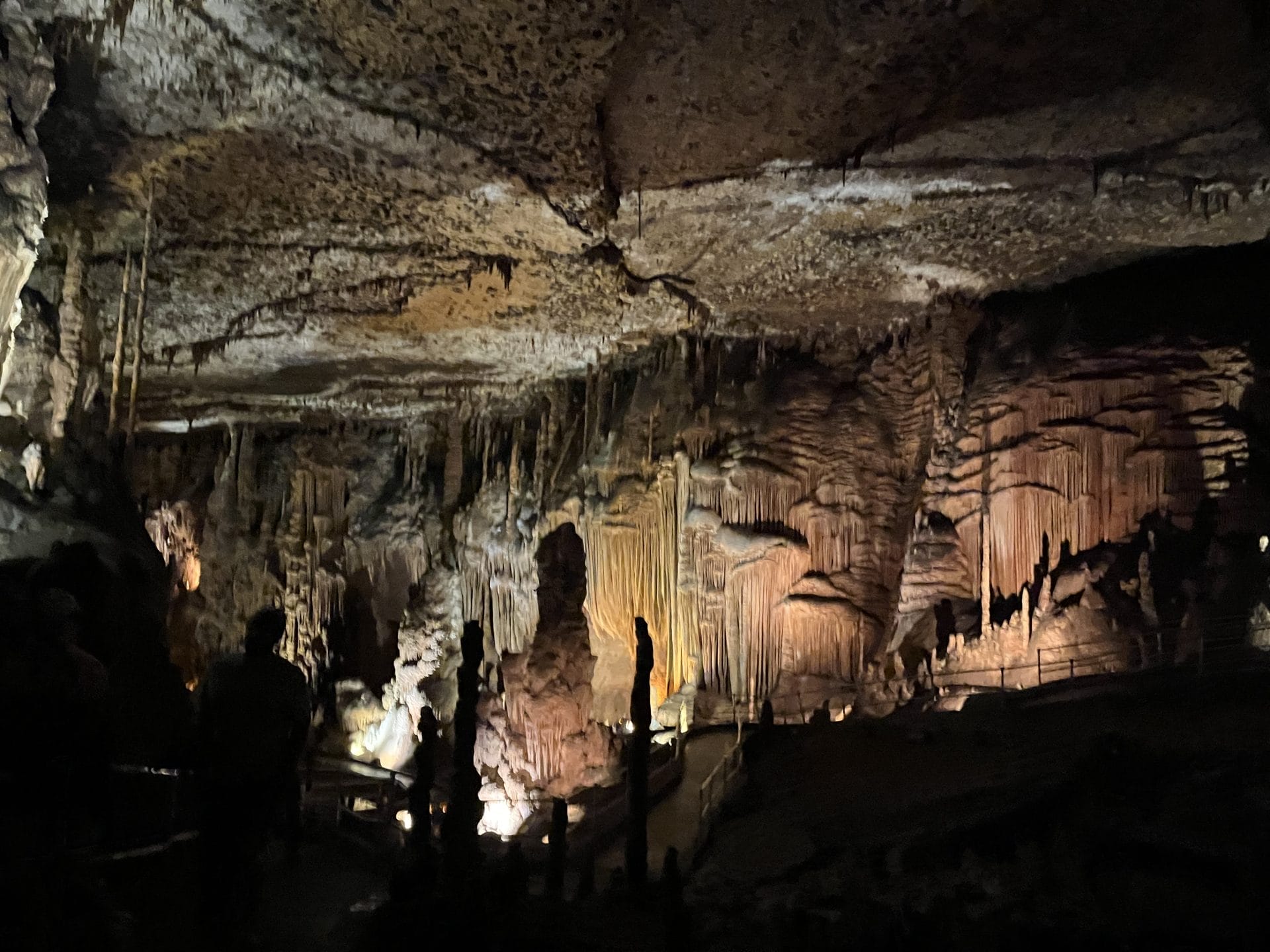

Uh oh...
It appears that you're using a severely outdated version of Safari on Windows. Many features won't work correctly, and functionality can't be guaranteed. Please try viewing this website in Edge, Mozilla, Chrome, or another modern browser. Sorry for any inconvenience this may have caused!
Read More about this safari issue.

August has arrived in Arkansas in all its hot and humid glory, and with it, the doldrums from a shortened time frame to spend outdoors. For the next few months, unless they’re enticed with the promise of a water sprinkler, swimming pool, or popsicles, most Arkansas children will balk at their parents’ suggestion to “just go outside.” This may make filling the days a little more difficult, but it also makes the evenings a little more enjoyable, even magical. As we emerge into a slightly cooler Arkansas summer night, lightning bugs emerge from their hiding places to rekindle the magic of summer.
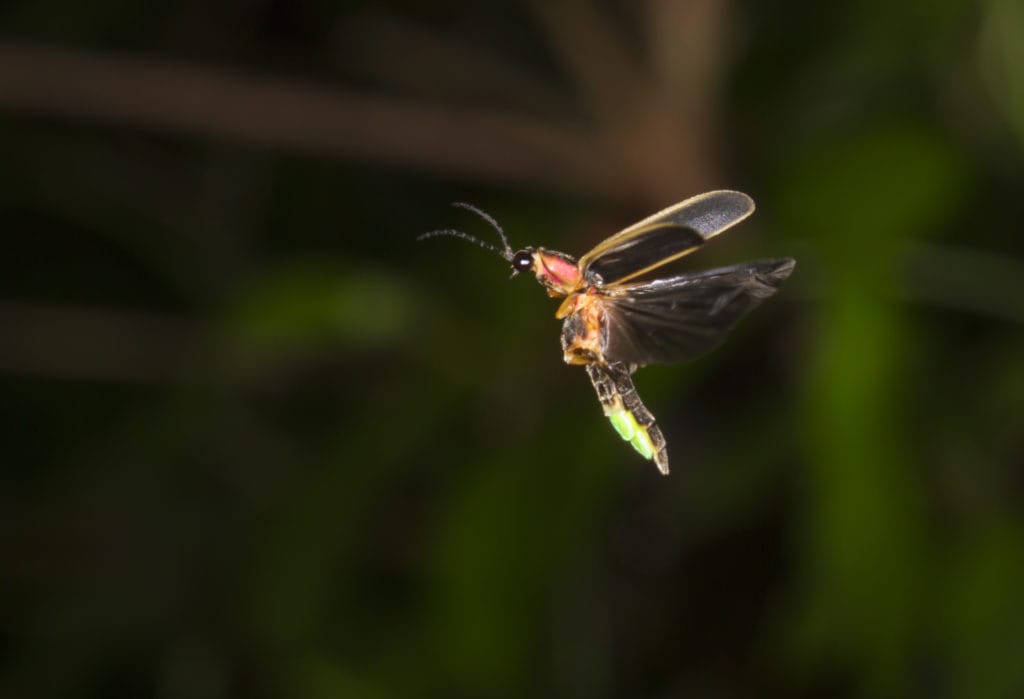
Lightning bugs, or fireflies, are actually neither bug nor fly, but are members of the Lampyridae beetle family. There are nearly two thousand species of lightning bug living on every continent except Antarctica. They thrive in humid tropical and temperate zones, which means the Arkansas heat that drives us inside to our fans and air conditioners allows them to survive. This is why you probably won’t see lightning bugs on a summer vacation to the Mountain West or Pacific Northwest. During the day, fireflies hide out in grass, vegetation or wooded areas, especially near water, but in the evening, they begin their show.
The fireflies we see rising from the grass are usually males, using the chemical reaction in their tails to communicate with females of their same species. The females generally remain in the grass or on bushes and shrubs, flashing to attract the males to them. The flashes and patterns differ by species. If you pay close attention, you will be able to notice differing flashing patterns of the lightning bugs around you. One species of female firefly actually mimics a different species through her flashes to attract dinner, not a mate. When the unsuspecting male arrives, she eats him and passes the toxins in his body into her eggs as a chemical defense. Aside from this Photuris species, it is believed that most lightning bugs do not eat during their three-to-four-week adult life.
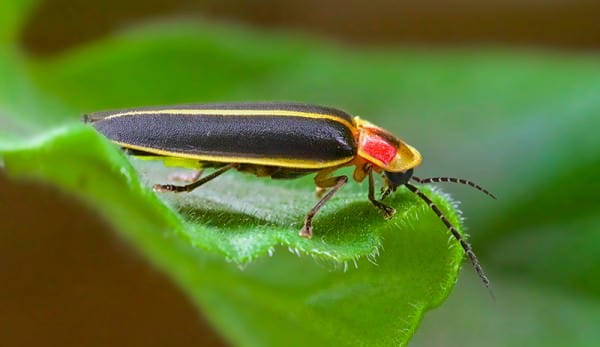
The firefly species found in Arkansas tend to light up randomly, flashing their way through our backyards and parks and making catching them even more of a challenge for kids and the young at heart. There are fireflies in Southeast Asia and along the East Coast from Georgia to Pennsylvania that light up in unison, putting on a nightly synchronized light show. Although our lightning bugs may not be quite as organized, it’s fairly easy to organize a viewing and catching party among your family members. Collect a few plastic or glass jars with small holes punched in the lids and put some grass and part of a damp paper towel in the bottom. A butterfly net can be a helpful tool but is certainly not necessary.
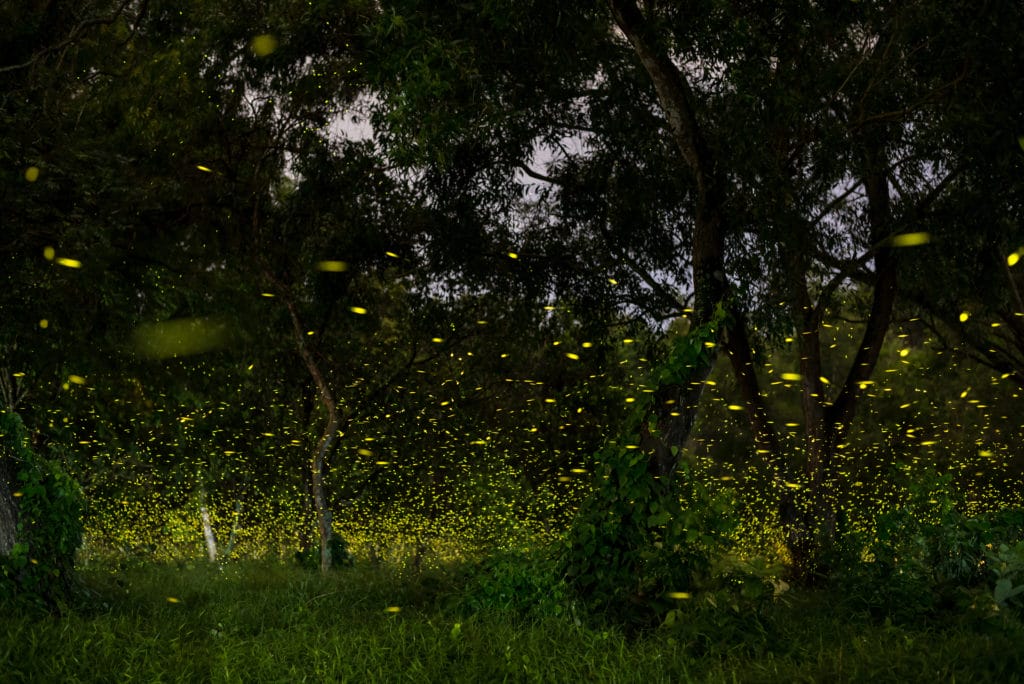
The main requirement for catching lightning bugs is to find a grassy area near water or woods, but not too close to porch lights or street lamps. If you are in your own yard, turning off the porch light will help attract them to the area. If you live in an urban area, find a local park with grassy areas near a river, lake or stream. In past years, various Arkansas state parks have held lightning bug interpretive programs. None are scheduled this summer because of Covid19, but a lightning bug hunt can be a fun addition to a state park family camping trip. Many Northwest Arkansas residents are also familiar with the Botanical Garden of the Ozarks’ “Firefly Fling.” This year, instead of one large event, the botanical garden is hosting several “Terrific Tuesday Nights” where lightning bugs will certainly be in attendance.
The name “lightning bug” tends to be used by Southerners and Midwesterners, whereas “firefly” is more commonly used in the Northeast and Western part of the United States. There doesn’t seem to be a definitive answer to why the name for this fascinating insect differs by region. However, one theory is that the lightning bug regions have large summer thunderstorms with lightning, and the firefly regions tend to have more wildfires. Some other fun names for this bioluminescent beetle are moon bug, glow fly, fire devil, glow worm, blinkie and glimworm.
Whatever you call them, be sure to regale the kids with stories of past firefly hunts at grandma’s house or running through the neighborhood yards. Turn off lights in the evenings and plant native flowers or bushes to attract them to your yard. Allowing grass to grow a little taller near trees will protect lightning bugs’ diminishing habitat. And not using pesticides will protect their diminishing numbers. Whether you enjoy an active lightning bug hunt with the kids, or just count the number of flashes from your porch or deck or park picnic table, watching lightning bugs is an Arkansas summer tradition that deserves to be passed down.
For more information on lightning bugs, including how to attract them to your yard, check out https://www.firefly.org/
Sorry, there were no posts found.
Join the Conversation
Leave a Comment
6 responses to “Lightning Bugs in Arkansas”
 Leave a Reply
Leave a Reply
We do the work.
You check your email.
Sign up for our weekly e-news.
Get stories sent straight to your inbox!






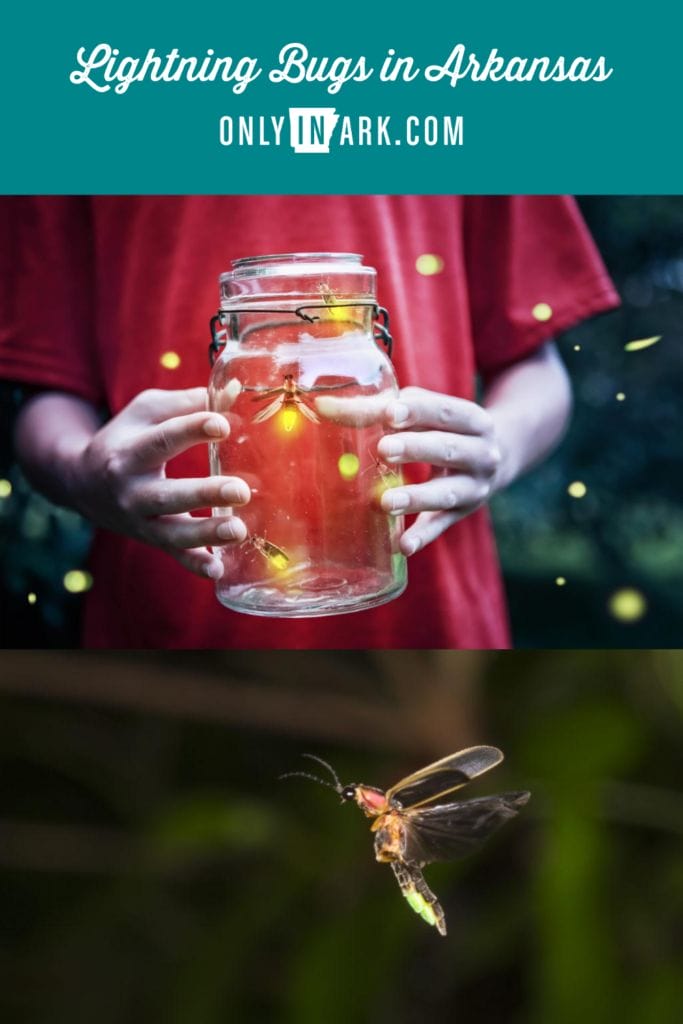

 Leave a Reply
Leave a Reply
Good job — first one down.
Loved doing this as a kid( l am 91) on the farm. Grandson Robbie came for a visit as a child,,and his cousin Larry and I showed him this wonder in Arkansas,wonder if he still remembers
I have traveled little in my 55 years but last year I got to see some lightning bugs up in NY quite by accident and I am in love! My daughter is in school in AR now and I was hoping to see some more of these enchanting creatures when I go to visit her this summer. My question is what is the date range for when they’re active? We saw them in August in NY. I’d like to visit her in July, probably mid-July. Will they still be out then? Thanks so much for your great article (PS-if you’ve never seen the California Redwoods, you MUST! My other top favorite of God’s stunning handiwork, topped only by human babies lol)
I saw a neighbor post a photo of them last night! So yes, they should be here when you visit.
[…] With a generally warmer, milder climate, Arkansas and its southern neighbors do tend to have more bugs than more northern states. Arkansas has between 35,000 and 40,000 different species of insects, but […]
[…] Lighting Bugs in Arkansas American Burying Beetle in Arkansas Dragonflies and Damselflies in Arkansas Butterflies in Arkansas Don’t Move Firewood! Protect Trees from the EAB […]